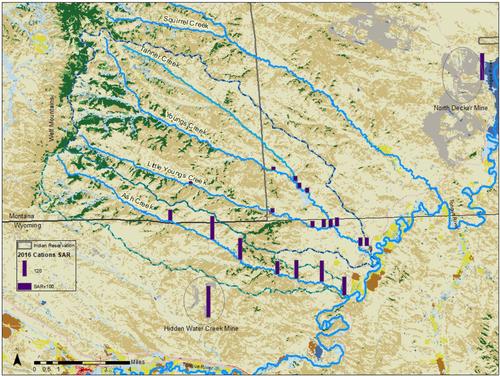Impacts of Coal Resource Development on Surface Water Quality in a Multi-jurisdictional Watershed in the Western United States
Abstract
This study focuses on water quality and quantity impacts from natural resource development on watersheds originating on Crow tribal lands in southeastern Montana. Field research analysis will focus on the surface water quality in three adjacent watersheds. This study will determine impacts to water quality from reclaimed coal mine spoils surface runoff and produced water discharge from coal bed methane wells within the watersheds. A secondary research objective is to determine a baseline assessment of surface water in watersheds prior to proposed mine development, particularly on tribally owned and allotted tracts. Historical data from state agencies will also be compared to data collected within watersheds on tribal lands. Water quality impacts from mining development may be more pronounced than that of coal bed methane as the reclaimed mining sites have demonstrated lasting impacts on the nearby surface water quality in the study area. Historical and current samples have demonstrated increased sodium absorption ratio and sodium levels downstream of a mine site in a tributary to the primary watershed. A sample from a pond in another reclaimed mine site contained the highest sodium adsorption ratio levels of all surface water samples. Coal bed methane development impacts may have been transient in the primary watershed surface water based on sample results. Historical oil and gas development appears to be impacting surface water quality within the southernmost watershed. Analysis has shown the increasing degradation of water quality in watersheds downstream and across the state boundary of Montana into Wyoming where natural resource development has occurred.


 求助内容:
求助内容: 应助结果提醒方式:
应助结果提醒方式:


